This was published 6 years ago
Best Indigenous Australia tourism experiences: Unforgettable Aboriginal culture highlights for tourists
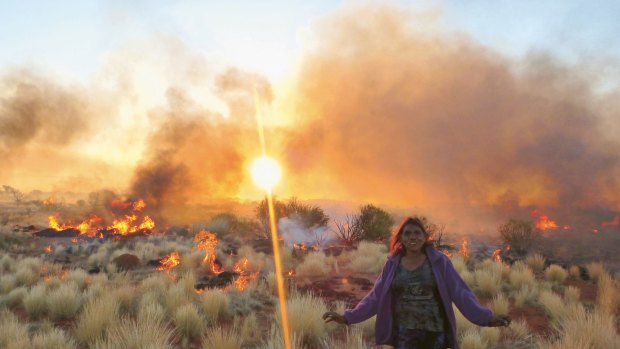
Daisy Walkabout at a burn of country near Katiti Waterhole, a photo featured in Marcia Langton's book Welcome to Country. Credit: Jessica Bolton
One of the most influential thinkers and advocates in Australian Indigenous affairs, Professor Marcia Langton, was, unlike certain conservative commentators, thrilled to see the wealth of Aboriginal content in the opening ceremony of the recent Gold Coast Commonwealth Games. But like the Gold Coast's traditional owners, she was dismayed by the demonstrations that accompanied the ceremonies.
"Those demonstrators didn't ask the traditional owners and the traditional owners were terribly disappointed," says Langton, an anthropologist and geographer who has held the Foundation Chair of Australian Indigenous Studies at the University of Melbourne for almost 20 years. "This was their moment to shine and a lot of artistic work went into it. I thought it was beautiful and done so well. Spectacular and unforgettable."
The events surrounding the Commonwealth Games encapsulate the disconnect between the story contemporary Aboriginal people want to relate about themselves and the public perception of Indigenous Australia. It's a dichotomy Langton is hoping to bridge with her new book, Welcome to Country.
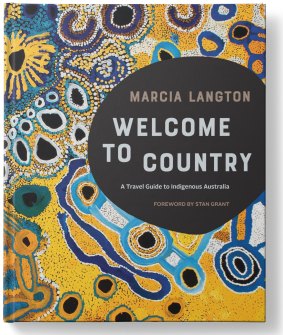
Welcome to Country by Marcia Langton.
It's a unique and comprehensive guide containing a dazzling collection of Indigenous travel experiences with detailed notes on getting to them, when best to go and what to see. Langton also offers valuable notes on cultural and historical context, and issues of which travellers should be aware.
"[Nowadays] there are visitors' centres, art and cultural centres, museums and festivals in even the most remote places, showcasing the fascinating history and cultures of Indigenous societies," Langton says. "When you are travelling around Indigenous Australia, you will find yourself in extraordinary situations with extraordinary people, whether you are exploring by foot, vehicle, boat, horse or camel."
As Langton says in the book, Indigenous tourism experiences extend to all corners of the continent: semi-arid areas such as the Central Desert or the Western Desert; savannah country across north Australia with its many dramatic rock outcrops, escarpments and gorges; the wet rainforests where fast flowing rivers cascade over mountain ranges; the temperate-zone coastal and riverine plains; the Great Dividing Range in its many forms; or on the beaches, islands and reefs and more.
Welcome to Country was compiled with the input of two Indigenous post-graduate students who worked closely with Langton on the research for the guide. "They loved the work because they themselves are traditional owners," Langton says. "It sounds prosaic but most Aboriginal people just want to be understood and there is so much misinformation which tragically poisons people against us and makes them frightened of us.
"But the reality is, there are hundreds of fantastic Aboriginal tourism businesses out there, so I was thinking this book could serve two purposes: to help reconciliation in a way most Australians will understand and appreciate.
"It also make it possible for any ordinary Australian, the kind who likes to go fishing for instance, to come face to face with real adventures of the kind that I take for granted but which I often think, gee, I'd love to show a friend this."
Native title, she says, has greatly inspired the growth in Indigenous tourism business and today it'd be possible to spend six months on the road exploring parts of Australia that most Australians don't know exist and have a fantastic holiday. Indigenous tourism in Australia, she believes, should be "world renowned."
In fact, she says Indigenous experiences, which rate highly on the list of "must-sees" among foreign tourists, "have led to much better relationships between Australians who were pretty nervous about Native Title. If there's an Aboriginal festival in the district, people now understand that it's going to bring money to the local area. It's stopped them being terrified of everything. That's just amazing."
Above all, Langton says, the experiences – and her book – are about fun. She figured that best thing approach was to make it simply possible for anybody to go and find something enjoyable to do. Here, then, is an extract from Welcome to Country, with just a sampling of experiences, designed to inspire your interest in embracing Indigenous tourism in Australia in all its myriad forms.
TOUR
LORD'S KAKADU AND ARNHEM LAND SAFARIS
WHERE Northern Territory
TELL ME MORE Lord's Safaris is a family-owned company with more than 25 years of experience in the tourism industry. Located in Kakadu, Lord's exclusively offers tailor-made private tours for small groups of up to seven guests. Tours are run throughout the Northern Territory, with the option of visiting some of the Territory's most impressive sites, such as Kakadu, Arnhem Land, Koolpin Gorge and Bamurru Plains.
ESSENTIALS Lord's Kakadu and Arnhem Land Safaris, phone 0438 808 548 or see lords-safaris.com
NJAKI NJAKI TOURS
WHERE Merredin, in the central wheatbelt, halfway between Perth and Kalgoorlie, Western Australia
TELL ME MORE Mick Hayden delivers an authentic Aboriginal experience with his walking tours of the Njaki Njaki Nyoongar country of Merredin Peak and the surrounding reserve. As a Traditional Owner, Mick shares the wisdom of his culture and country with Aboriginal Dreamtime stories and tells visitors about bush tucker and Aboriginal tools and artifacts at sites of significance for the Njaki Njaki people.
ESSENTIALS Njaki Njaki Tours, phone 0407 984 470 or see njakinjaki.com.au
ABORIGINAL BLUE MOUNTAINS WALKABOUT
WHERE NSW
TELL ME MORE Local Darug man, Evan Yanna Muru, owns and operates the Blue Mountains Walkabout guided tours. Evan is a fully accredited wilderness guide, having worked for the Blue Mountains National Park and Wildlife Service as an Aboriginal Discovery Ranger. On the tour, visitors have the opportunity to connect with Aboriginal country and culture in a deep and meaningful way. The bushwalk goes for two hours and covers 3.5 kilometres.
ESSENTIALS Aboriginal Blue Mountains Walkabout. Starts and finishes at Faulconbridge railway station platform. Phone 0408 443 822 or see bluemountainswalkabout.com
ABORIGINAL CULTURAL TOURS
WHERE Yorke Peninsula, South Australia
TELL ME MORE Aboriginal Cultural Tours is located on Adjahdura Land on the Yorke Peninsula and run by Quenten Agius, a Traditional Owner and chairperson and Senior Heritage Monitor for the Adjahdura Narungga Heritage Group. Aboriginal Cultural Tours SA offers 10 single- and multi-day bush, coastal and combination tours through Ngadjuri country and Adjahdura land, and has a focus on supporting local businesses, accommodation providers and produce.
ESSENTIALS Aboriginal Cultural Tours, 46 Maitland Road, Point Pearce, South Australia, phone 0429 367 121 or see aboriginalsa.com.au
ADVENTURE NORTH AUSTRALIA
WHERE Daintree, Far North Queensland
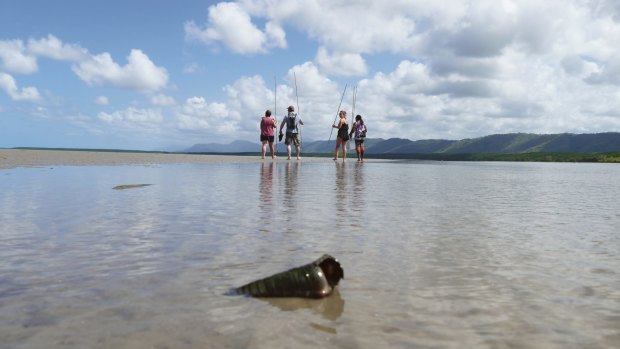
The Daintree.Credit: Adventure North Australia
TELL ME MORE Adventure North Australia has been operating out in the Daintree region of north-east Queensland since 2004. Tours run by Adventure North are created in partnership with, and guided by, Traditional Owners of the lands and immerse visitors in the natural and cultural beauty of the area. Guests can choose from one- and two-day Daintree Dreaming or Dreamtime Walk tours, a two-hour coastal walk along Cooya Beach, or 30-minute walking tours to Bloomfield Falls. All tours have an emphasis on the rich Aboriginal cultures of the area.
ESSENTIALS Adventure North Australia, 36 Aplin Street, Cairns, phone (07) 4028 3376 or see adventurenorthaustralia.com/the-bama-way/
WUKALINA WALK
WHERE North-east Tasmania
TELL ME MORE This is an Aboriginal-owned and operated guided walk that takes visitors on a three-night, four-day walk through the magnificent natural landscape of Larapuna (Bay of Fires) and Wukalina (Mount William) in north-east Tasmania, the cultural homeland of the Palawa people. The Palawa evolved in isolation for more than 10,000 years, and their culture and heritage are different from mainland Aboriginal cultures, both in traditional times and since European occupation. For visitors, the Wukalina Walk is a significant experience that will deepen your understanding of Lalawa (Tasmanian Aboriginal) culture and community history while you immerse yourself in the natural and rugged beauty of the area. Walk with Palawa guides in the footsteps of the Traditional Owners on the cultural homeland of Wukalina and Larapuna. The guide shares Palawa creation stories and invites visitors to participate in cultural practices that have been passed down for hundreds of generations.
ESSENTIALS Wukalina Walk, 163 St John Street, Launceston. Guests spend two nights staying in comfortable domed huts and one night in the meticulously renovated Lighthouse Keepers Cottage at Larapuna. Phone 0447 244 727 or see wukalinawalk.com.au
SEE
JILAMARA ARTS AND CRAFTS
WHERE Northern Territory
TELL ME MORE Jilamara Arts is located in the community of Milikapiti on Melville Island and displays Tiwi Island art from 60 local artists. They have contributed significantly to Australia's contemporary Indigenous art scene and are highly respected for their astonishingly rich art. The artists are renowned for their use of natural ochres in paintings of various mediums, tunga baskets, tutini poles and carvings.
ESSENTIALS Fly Tiwi operates a daily direct flight from Darwin. For permits to visit the community see permits.tiwilandcouncil.com
WARAKURNA ARTISTS
WHERE Gibson Desert, Western Australia
TELL ME MORE At the base of the spectacular Rawlinson Ranges in the Gibson Desert, in the Ngaanyatjarra lands is the remote community of Warakurna, which has a long history of artistic expression. The art centre is the energetic, creative and happy hub of the community, where people, young and old, paint the stories of the Tjukurrpa, traditional law and culture and their desert home.
ESSENTIALS Warakurna Artists is located about 330 kilometres from Uluru, near the Northern Territory border. Phone (08) 8955 8099 or see warakurnaartists.com.au
NARANA ABORIGINAL CULTURAL CENTRE
WHERE Geelong, Victoria
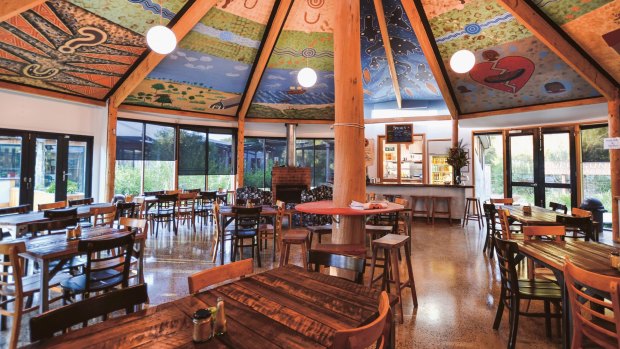
Cafe Narana.
TELL ME MORE Narana offers guided and self-guided cultural tours, displays of artefacts and a cafe serving Indigenous-inspired meals. The onsite Cultural Exhibition Building and Art Gallery displays artworks by internationally acclaimed Aboriginal and Torres Strait Islander artists that are available for purchase. The site includes Australian wildlife such as wallabies and emus, and an adventure playground for children.
ESSENTIALS Narana Aboriginal Cultural Centre, 410 Surf Coast Highway, Geelong. Phone (03) 5241 5700 or see narana.com.au
STAY
BANUBANU BEACH RETREAT
WHERE Bremer Island, Northern Territory
TELL ME MORE Banubanu Beach Retreat is an eco-resort in East Arnhem Land, built in partnership with the Yolŋu people on whose land the retreat is located. The resort offers a peaceful island getaway as it allows a maximum of only 20 guests at any one time. There are three accommodation options to suit all tastes: the deluxe beachfront eco tents, the eco-friendly Beach House cabin, and the Hideaway cabin with all the comforts of home. Day visits to the retreat are also available.
ESSENTIALS Banubanu Beach Retreat, phone (08) 8987 8085 or see banubanu.com
KOOLJAMAN
WHERE Cape Leveque, Western Australia
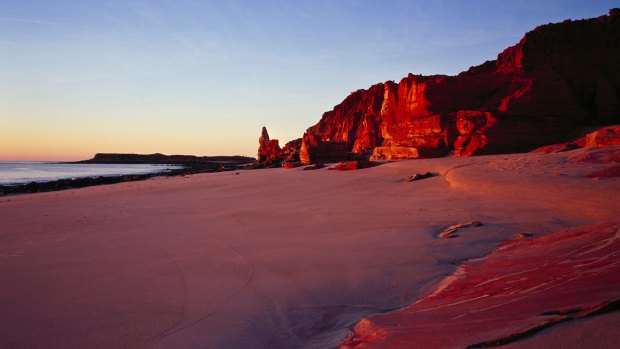
Cape Leveque, Western Australia Credit: Cephas Picture Library / Alamy Stock Photo
TELL ME MORE To some people, Kooljaman is seen as a luxury resort, as the Traditional Owners have taken care to ensure the resort showcases their country in its natural, unspoilt beauty. Others see it as a wilderness camp; off the grid and sustained by solar power and local bore water. However you see it, staying there is a unique experience in some of the most incredible and isolated country in the world. Camping and accommodation options range from deluxe safari tents, to cabins, to beach shelters and camping, suiting all budgets and itineraries.
ESSENTIALS Kooljaman, Cape Leveque, is 208 kilometres north of Broome. Phone (08) 9192 4970 or see kooljaman.com.au
BUNDJALUNG NATIONAL PARK
WHERE North Coast of NSW
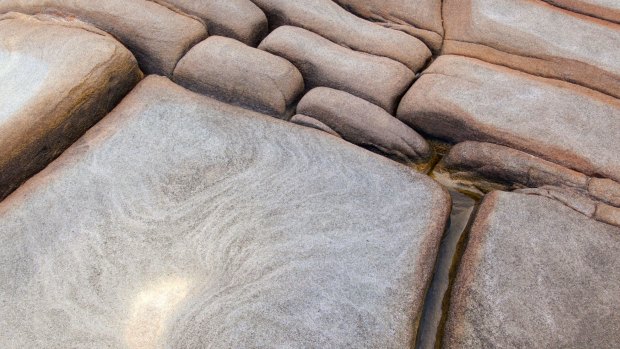
Coastline rock patterns, Bundjalung National Park. Credit: Clint Farlinger / Alamy Stock Photo
TELL ME MORE Bundjalung National Park, on the north coast of NSW, is one of the most beautiful national parks in Australia, with its scenic coastlines and lush bushland. It stretches north from Iluka to Evans Head, and meets the Pacific Ocean on the east. The park is in the land of the Bundjalung people.
ESSENTIALS Bundjalung National Park has two campgrounds: Black Rocks, with 52 sites, and Woody Head, with 94 sites. See nationalparks.nsw.gov.au
GRAMPIANS NATIONAL PARK
WHERE Western Victoria
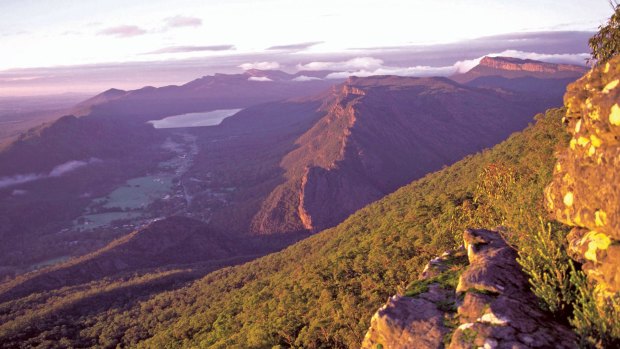
The GrampiansCredit: Brambuk National Park and Cultural Centre
TELL ME MORE The Grampians (Gariwerd) is and has always been a significant place for Victorian Aboriginal people, and their incredible rock art can be seen throughout the park, and at Bunjil's Shelter in particular. For the Aboriginal people of this area, Bunjil is an essential spiritual figure and the creator of life. To see Bunjil's Shelter is to gaze upon rock art that is thousands of years old and yet the spirit and beliefs of Bunjil the creator are still evident in Victorian Aboriginal culture today.
ESSENTIALS The Brambuk National Park and Cultural Centre is just south of the village of Halls Gap. A variety of camp grounds are located in beautiful forest surroundings. Book early during busy holiday periods. See visitgrampians.com.au
WILPENA POUND RESORT
WHERE Flinders Ranges, South Australia
TELL ME MORE Wilpena Pound Resort, the only accommodation located within the Ikara-Flinders Ranges National Park, was purchased in 2012 as a joint venture by Indigenous Business Australia (IBA) and the Adnyamathanha Traditional Lands Association (ATLA), to provide a sustainable economic future for the local Adnyamathanha people. The resort offers a number of activities to visitors to Adnyamathanha Country, including Aboriginal culture walks, 4WD tours, and scenic flights around the park and over Lake Eyre.
ESSENTIALS Wilpena Pound Resort, Ikara-Flinders Ranges National Park. Phone 1800 805 802 or see wilpenapound.com.au
GREAT SANDY NATIONAL PARK
WHERE Queensland
TELL ME MORE Aboriginal people have lived in the Great Sandy area for at least 5000 years according to archaeological evidence, but they may have been there far longer. The Butchulla people lived on K'gari (Fraser Island) and the nearby mainland. Their heritage sites of spiritual, social and archaeological significance are found on the island, as well as their middens, artefacts, scarred trees and campsites.
ESSENTIALS Great Sandy National Park offers an exciting range of camping options phone 13 74 68 or see npsr.qld.gov.au
NAMADGI NATIONAL PARK
WHERE Australian Capital Territory
TELL ME MORE A wide range of natural environments are found in the Namadgi National Park, which at 106,095 hectares covers almost 46 per cent of the ACT. The park is home to an abundance of wildlife with more than 700 plant species, 222 species of animals, 15 threatened species and more than 40 rare or uncommon species. It is also rich with Aboriginal history, with sites of cultural significance dating back 21,000 years. The area was traditionally a meeting place, where neighbouring clans would meet for ceremonies and marriages. With 160 kilometres of marked walking tracks that range in time from under one hour to seven hours, the park is a stunning, diverse and fascinating destination for visitors who enjoy the outdoors.
ESSENTIALS Namadgi National Park is three and half kilometres south of Tharwa. Book at bookings.act.gov.au Phone 6207 2900 or see environment.act.gov.au
EXPERIENCE
PAMAGIRRI ABORIGINAL EXPERIENCE
WHERE Kuranda, Far North Queensland
TELL ME MORE The Pamagirri Aboriginal Experience is hosted by the Woodward Family's RainForeStation, a tourism destination that has been in operation for 40 years. As well as Pamagirri, the park operates the Koala and Wildlife Park, the Army Duck Rainforest tour, Bush Tukka walks and a host of other things to do and see. The Pamagirri Aboriginal Experience tells the story of the Dreamtime and the traditions and customs of the Pamagirri people, the Traditional Owners of the Kuranda rainforest. The experience is conducted by Pamagirri guides.
ESSENTIALS Pamagirri Aboriginal Experience, Kennedy Highway, Kuranda, phone (07) 4085 5008 or see rainforest.com
TORRES STRAIT ISLANDS
WHERE Queensland
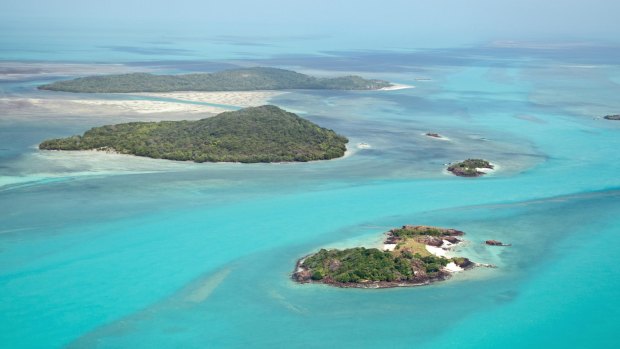
Torres Strait.Credit: John Rainbird / Alamy Stock Photo
TELL ME MORE The Torres Strait Islands stretch from Queensland's northernmost tip to Papua New Guinea's southern shores, and from the Coral Sea in the east to the Arafura Sea in the west. While the Torres Strait is made up of more than 200 islands, only 17 are inhabited. Breathtaking in their diverse, unspoilt beauty, these islands sustain a unique culture, language and geography. Here you will find coral cays, mangrove swamps and rocky outcrops, and magnificent volcanic mountains covered in thick rainforest that rise majestically from the ocean. Torres Strait Islander people are ethnically Melanesian and are distinct from Australian Aboriginal people, with small variations within each island community.
ESSENTIALS There are regular ferry services and flights to the Torres Strait Islands. See qantas.com.au; skytrans.com.au; peddellsferry.com.au; tiferry.com.au
This is an edited extract from Welcome to Country by Marcia Langton, published by Hardie Grant Travel; RRP $39.99. See hardiegranttravel.com
FIVE MORE INDIGENOUS ISLANDS TO EXPLORE
1. BATHURST ISLAND, NORTHERN TERRITORY
The township of Wurrumiyanga is the largest of the Tiwi communities and is located on Bathurst Island. The Tiwi people contribute more than their fair share of players to the AFL, but their own grand final in March, attracting teams from the region, is far more exciting than the big one down south. Their art traditions are not as well-known but deserve to be. Not far from Darwin by ferry or plane, the community is home to the Tiwi Design art centre, a local museum and the Catholic mission precinct. Fishing is a major activity here. See tiwiislands.org.au
2. PALM ISLAND, NORTH QUEENSLAND
This community is home to about 5000 people and is one of the largest Aboriginal and Torres Strait Islander communities. With a tragic political history but a great determination to make their community successful, the islanders host visitors for day trips. The scenery is stunning, and the bright blue water is never boring, with whales, sharks and many other creatures often visible from the ferry. From June to September, humpback whales can be sighted. The market and the cultural events are held regularly. Palm Island is accessible by ferry or plane from Townsville. See piac.com.au
3. GOAT ISLAND IN SYDNEY HARBOUR, NSW
The island lies in the territory of the Gadigal people who call it Me-mel. The extraordinary characters who met the first British – Bennelong and Barangaroo – lived and visited here, although their main camps were on the harbour shores. Convicts were imprisoned here and built the Queen's Magazine, hand carving the sandstone in its walls. The Tribal Warrior and other ferries take visitors to this island and others in the harbour. See nationalparks.nsw.gov.au
4. NORTH STRADBROKE ISLAND, SOUTHERN QUEENSLAND
Minjerribah is the largest sand island in the world and is the home of the Quandamooka people. Their successful native title determination gives them more say in the management of the more than 100 beautiful lakes and wetlands and the ancient sand dunes in their homeland. There are surfing beaches, excellent fishing and island exploring. See stradbrokeisland.com
5. BREMER ISLAND, NORTHERN TERRITORY
Dhambaliya is one of the heartlands of the Rirratjingu clan of the Yolngu Matha-speaking people who host visitors at their Banubanu Beach Retreat. From the white sand beaches, you will see incredible sea life, including giant manta rays. Yolngu culture is endlessly fascinating and visitors often book this resort after the Garma Festival. See banubanu.com
ABOUT MARCIA LANGTON
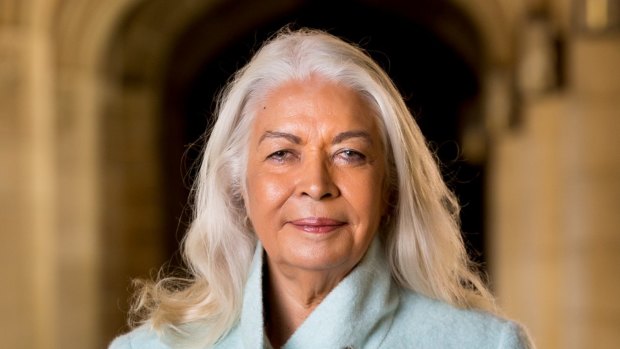
Professor Marcia Langton is an anthropologist and geographer. Since 2000 she has held the Foundation Chair of Australian Indigenous Studies at the University of Melbourne. She has produced a large body of work in the areas of political and legal anthropology, Indigenous agreements and engagement with the minerals industry, and Indigenous culture and art. In 1993, she was made a member of the Order of Australia in recognition of her work in anthropology and the advocacy of Aboriginal rights. Professor Marcia Langton is a Fellow of the Academy of Social Sciences in Australia, a Fellow of Trinity College, Melbourne and an Honorary Fellow of Emmanuel College at the University of Queensland.
Sign up for the Traveller Deals newsletter
Get exclusive travel deals delivered straight to your inbox. Sign up now.